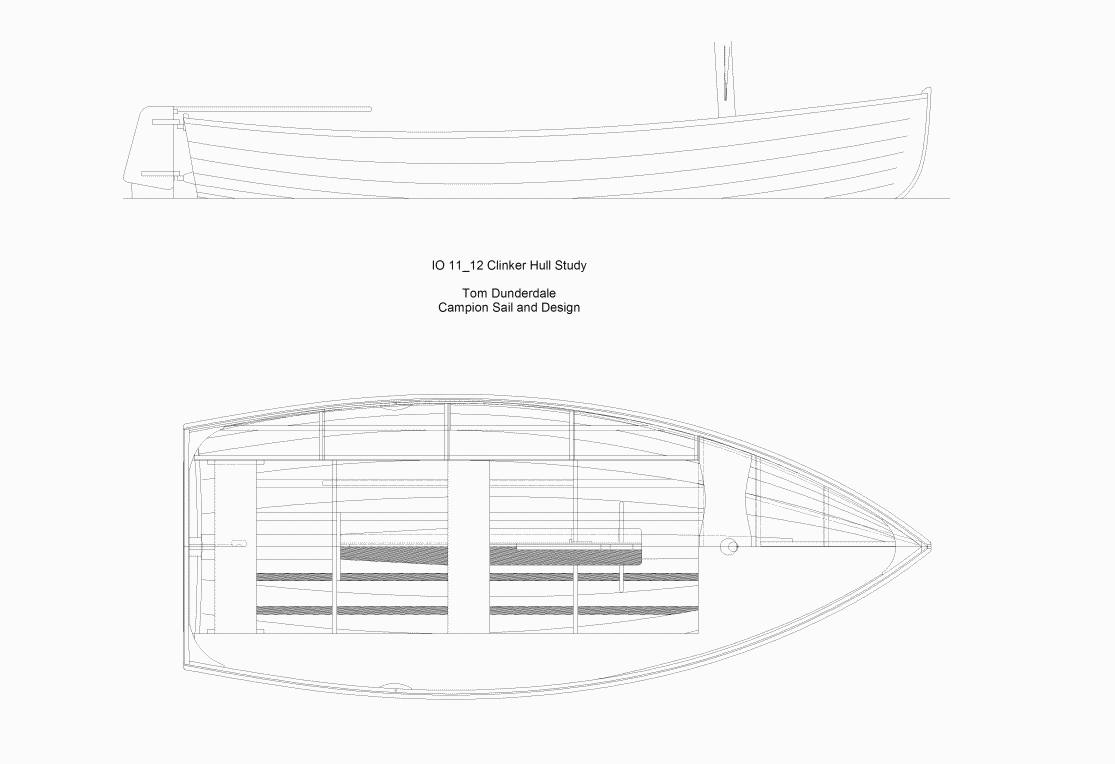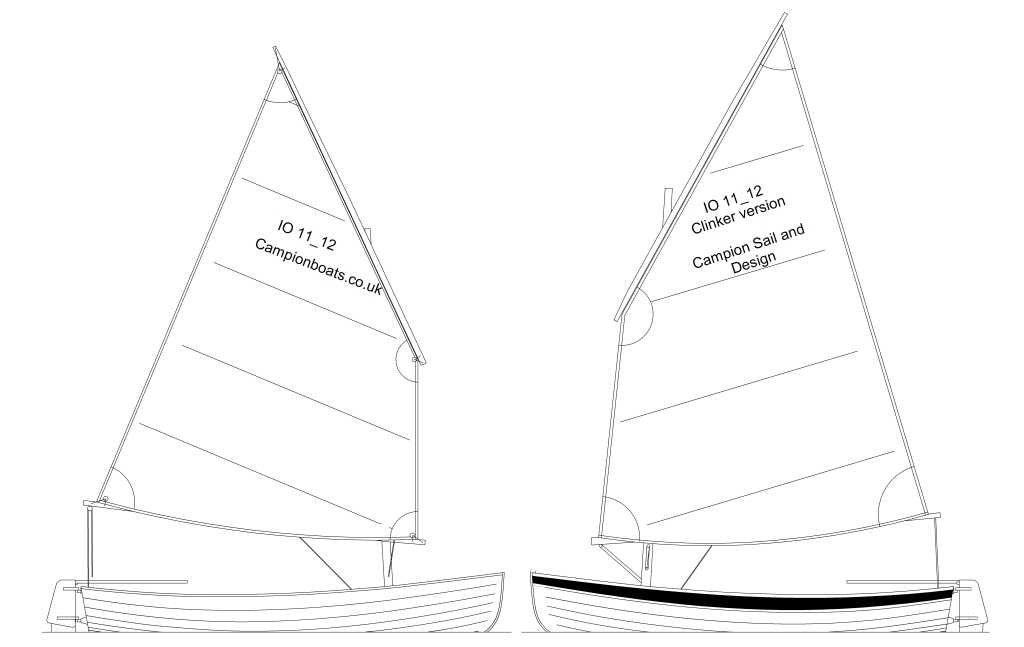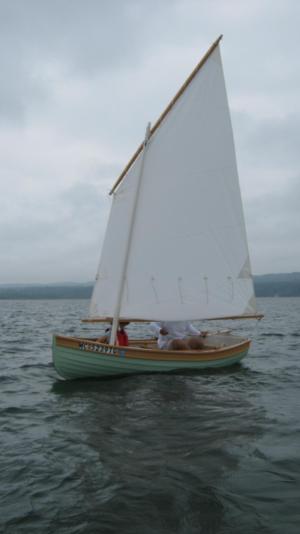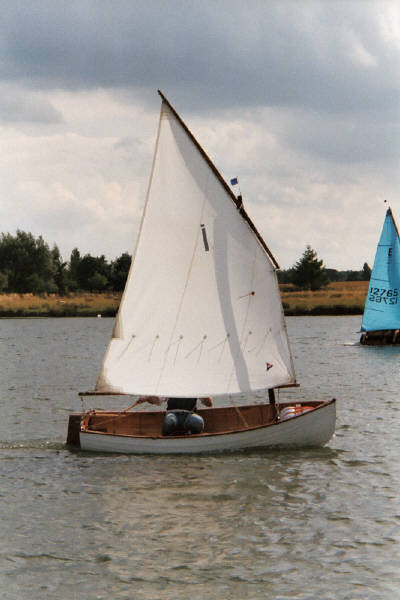I0 11-12 clinker sailing dinghy
IO 11-12: geneally along the lines of Iota, but much beamier and more burdensome, and with a raked transom, too, all to give considerably more room. For 7 plank glued clinker or multi-chine construction. Stable yet fast, attractive and able, light yet strong, the seven plank aside hull goes together reasonably quickly to give a satisfying traditional appearance with modern materials. Two separate sealed tanks run under the side seats for a good part of the hull to provide buoyancy and strength.
The multi-chine version takes just 5 sheets of ply for the hull, transom, centreboard case and buoyancy tanks, while the glued clinker requires one additional sheet. There is no guess work or trial and error in the lining out of the planks for the clinker version as the position of the plank edges is clearly defined on the moulds. although you can of course do your own lofting and lining out of planks, as Dennis Marshall chose to do for his version, if you so wish.
Photo of Dennis Marshall's recently launched version, still unnamed. Dennis modified the design extensively to suit his requirements, the most obvious being the change to an 8 plank hull with heavier strakes and an open layout without the built-in buoyancy.
Closer in overall length to a 12 footer rather than an 11, IO nevertheless has a waterline length typical of many traditional 11 footers and it is on that basis that she merits the eleven in her name. On the left is the multi-chine hull with a modest 60 odd sq foot sail, and on the right the glued clinker version with 70 odd sq ft. As a long centreboard case rather than a daggerboard case has been chosen, either hull is to be built upside down over a few well spaced frames and an internal hog or inner keel for stiffness during construction. The multichine hull, taped or glass-sheathed externally, has been lined off to give the appearance of close-seamed carvel while the glued clinker with both gunwale and lower rubbing strips and broader planking has a more rugged, working boat style appearance.

The lines of the plank laps, with the lower outer edge radiused, are projected onto the profile view and give an accurate impression of what the hull will look like if the planned lining off is followed, as the bevel of the preceding plank and the actual overlap are drawn for each plank at each mould on the body plan before the lines are projected. It is only by doing this that a true impression of the appearance of the hull can be attained; the usual method of simply drawing pleasing plank lines unrelated to the lining off is of little help to the builder. This of course does not prevent you from rounding off the moulds on the given dimensions and doing your own lining off if you have your own ideas and wish to increase the number of planks
Plans for both versions are on seven A1 sheets with keyed construction and sail plan details, mould details and measurements, with a separate offset sheet table and, for the multi-chine version, strake offset table for drawing out the planks full size.
Photo courtesy of Dennis Marshall
Construction photos and larger pictures are here
Both boat and skipper Dennis Marshall take things in their stride in potentially uncomfortable conditions, handling them very well without fuss or drama whilst making good progress both up-wind and down HERE
Below is the Iota, her predecessor, in a club race and sporting the smaller sail plan






































